(This post may contain affiliate links. For more information, please read our Privacy Policy.)
So, you’re planning a trip to Ireland? Well then, you’ve come to the right place! We’ll say from the get-go that we do not live in Ireland, nor do we claim to be experts on absolutely everything there is to know about Ireland. But, we can tell you that we are completely in love with the beauty of Ireland and its people. We’ve spent close to 3.5 months (on 4 separate trips) exploring the Emerald Isle. Therefore, we’ve got tons of planning tips to share with you.
 Just a few of our favorite places around Ireland
Just a few of our favorite places around Ireland
This post is meant to get you started with planning a trip to Ireland. We’ll link to several of our other Ireland posts, along with helpful external websites, throughout this guide to further help you with planning your very own Irish adventure. Ireland is an experience, a connection, a destination that we can almost guarantee you’ll want to return to after your first visit. So, let’s get planning a trip to Ireland!
Frequently Asked Questions When Planning a Trip to Ireland
Best time of year to visit Ireland?
It depends. There are certainly perks and disadvantages to every season! Summer (June, July, and August) has the best weather and more hours of daylight, but it is much more crowded and prices for accommodations and rentals cars are higher. The off-season (winter) is more affordable, but the weather isn’t as ideal. Also, many attractions have limited hours and some accommodations actually close down for the winter.
No matter the season, Ireland’s weather can change in an instant, so be sure to pack layers and rain gear. We’ve visited in pretty much every season, so we’re happy to provide an in-depth look at Ireland season by season.
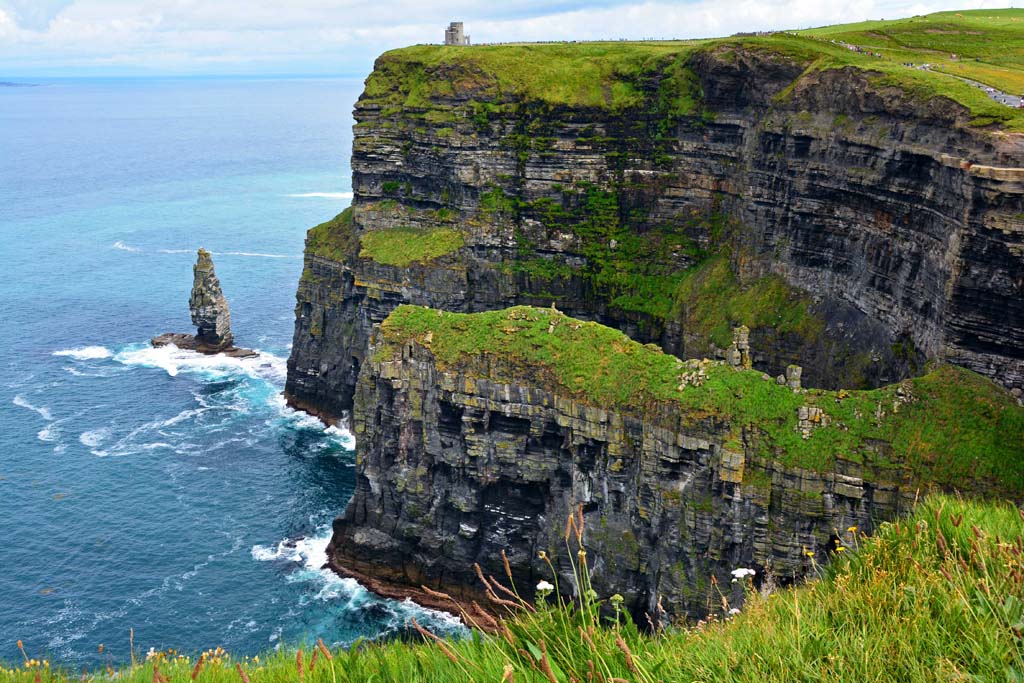 Of course everyone wants to visit the Cliffs of Moher on their trip to Ireland!
Of course everyone wants to visit the Cliffs of Moher on their trip to Ireland!
Which airport in Ireland should I fly into?
There are 4 international airports in Ireland, along with several regional airports. Which airport you fly into depends on 1) where you’re flying in from and 2) which region of the country you wish to explore. Flights into Dublin (east coast of Ireland) come from nearby European countries in addition to the Middle East & North America. Most flights into Shannon Airport (west coast of Ireland) from the US hail from the east coast of the US.
Cork is a very small airport, though it recently started receiving flights from Rhode Island in the US via Norwegian Air. If you plan to mostly explore the west coast of Ireland, hitting the highlights such as the Cliffs of Moher and the Ring of Kerry, you may want to consider flying into Shannon or Cork. We’ll cover more about flights to Ireland in the transportation section of this guide.
What identification/visa do I need to enter Ireland?
US/Canadian Citizens: You’ll need a valid passport with an expiration date of at least 6 months after your return date. You do not need a visa to enter the Republic of Ireland or Northern Ireland (UK) and can stay up to 3 months.
UK Citizens: You are not required to have a passport or visa to enter the Republic of Ireland, but you will need some form of photo identification (passport or driver’s license).
EU Citizens: You are required to have a passport or national identity card. A visa is not required to enter the Republic of Ireland or Northern Ireland.
Citizens of the EEA Member States (the 27 countries of the EU (European Union), US, Canada, Australia, New Zealand, Iceland, Norway, and Liechtenstein): You are not required to have a visa to gain entry to Republic of Ireland or Northern Ireland.
All Other Countries: Must have a valid passport. Contact your local Irish embassy/Consulate prior to traveling to Ireland and/or your local British Embassy/High Commission prior to traveling to Northern Ireland for visa requirements.
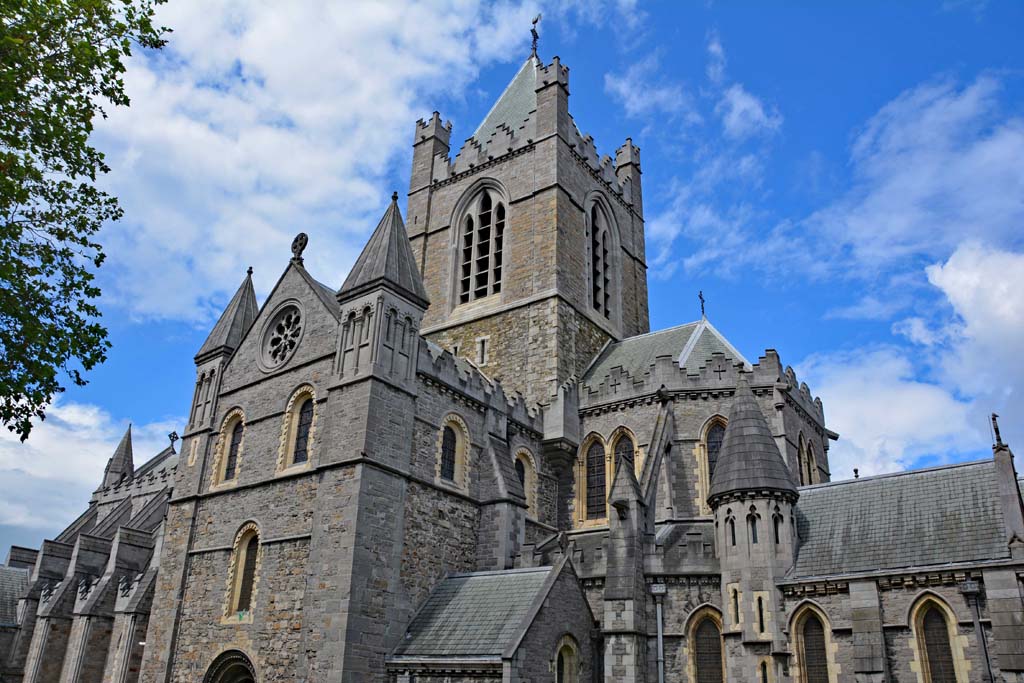 St Patrick’s Cathedral (Dublin) is one of many wonderful things to see in Ireland
St Patrick’s Cathedral (Dublin) is one of many wonderful things to see in Ireland
How many days do I need to explore Ireland?
As many as you can afford (time off of work and financially)! Don’t cram too much into your first visit to Ireland, because chances are, after your first visit, there WILL be a second! Though the country is relatively small, don’t underestimate the distance between destinations. Pick a region you wish to explore and spend your time appreciating its beauty. If you try to quickly see as much as possible, you’ll leave feeling exhausted and will miss out on the opportunities to experience the local culture, customs, and traditions.
Don’t just see the sites; take time to mingle with the locals, as they’re some of the nicest people you’ll meet during your travels! So, to answer the question above, again, as many days as you can afford. We have a great collection of suggested itineraries in our Ireland Destination Guide, based on the number of days you have to explore.
Do I need to rent a car in Ireland?
Whether or not you rent a car during your visit to Ireland depends on your travel style. We have always rented a car while in Ireland because we LOVE road trips! It can be pricey (depending upon when you visit) and nerve-racking if you’re not used to driving on the left, but it presents freedom like no other transportation option can. Discover Ireland’s 6 National Parks on your own schedule. And check out what we consider to be the TOP 10 scenic drives in Ireland. (These pictures alone may inspire you to rent a car in Ireland.)
It may be somewhat challenging to get around using only public transportation, so another alternative could be to go on a multi-day coach tour. But, to truly get the most out of your trip, we recommend renting a car in Ireland, so long as you feel comfortable driving on the right side of the car in the left lane of frequently narrow and winding roads. Eek! But, if you’re more comfortable letting someone else do the driving, check out some of the guided tour options we list later on.
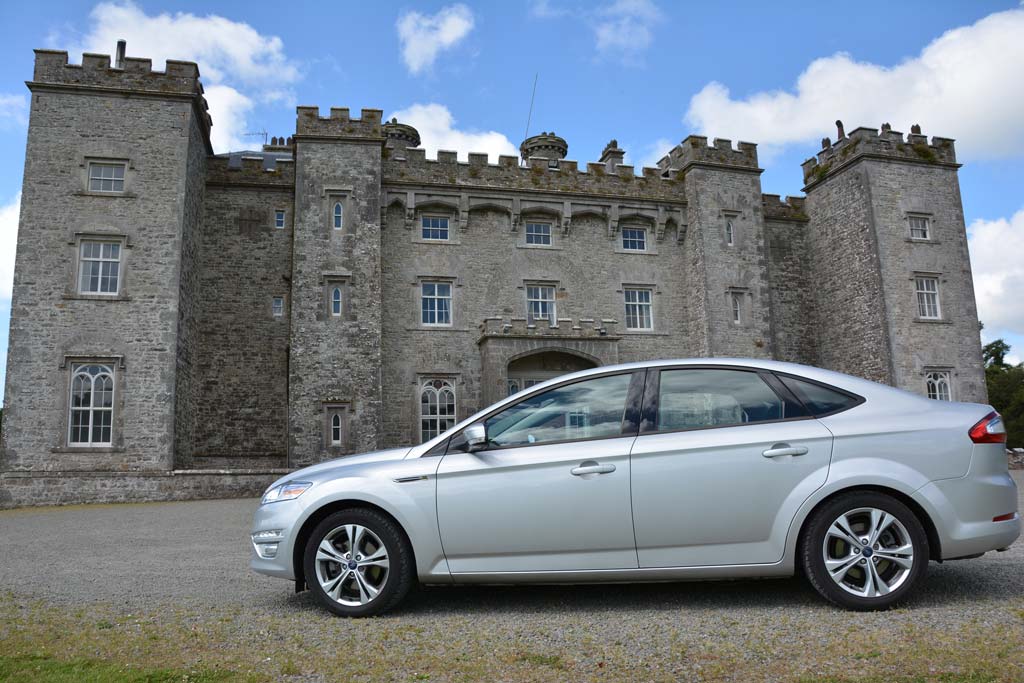 Renting a car in Ireland is a great way to explore the country at your own pace
Renting a car in Ireland is a great way to explore the country at your own pace
Guided Tours in Ireland
Want to see the very best of Ireland while allowing someone else do the driving? Then you might want to consider a multi-day motor coach tour. (Individual day tours are also available, focusing on a specific driving route/attractions.) Ranging from small group tours of 10-16 passengers to full-size bus tours with around 40 passengers, guided tours put someone else in the driver’s seat both literally and figuratively!
The details are already planned and you simply sit back and relax as you get transported to Ireland’s most desirable locations. Please note that we have NEVER done a guided tour in Ireland, so while we want to provide you with a list of options to further investigate, we are not recommending or endorsing any of the following companies, as we have had no personal experience with any of the companies listed.
- Paddywagon Tours – Offering day tours, multi-day tours, private tours for couples, families, and groups, and shore excursions for cruise passengers, Paddywagon typically caters to a more youthful audience.
- Love Irish Tours – Love Irish Tours offers self-drive tours, private escorted tours, and multi-day coach tours. They provide a wide range of fully customizable tours to suit most budgets.
- Celtic Journeys – Providing tailor-made vacations, featuring individual travel and small escorted groups. They strive to seek out new places and hidden gems offering unique and local experiences.
- Wolfhound Adventure Tours – Bikes, Hikes & History! Wolfhound’s small-group hike, bike and multi-active small group adventure tours of Ireland are for all ages and are said to be legendary!
- CIE Tours – CIE offers guided coach tours varying in length from 5–24 days. All tours feature prepaid daily sightseeing, excellent hotels, full breakfasts, most dinners, and, most importantly, no hidden extras.
- Railtours Ireland – Using a combination of comfortable Intercity trains & luxury coaches, Railtours offers car-free vacations bringing you to Ireland’s most popular destinations. Single & multi-day trips available.
Of course, there are plenty of other reputable tour companies out there; we simply wanted to point you in the direction of a few companies you may want to look into if a guided tour sounds more like your preferred style of travel. Again, we have no connection with these companies and therefore cannot guarantee the availability and quality of their tours. We encourage you to do further research and read an ample amount of previous customer reviews before making a final decision.
How big is Ireland?
The entire island of Ireland is 32.5k square miles (84.4k sq km), about the size of Indiana in the US. The Republic of Ireland makes up 27.1k square miles (70.2 sq km) of the total island size and Northern Ireland makes up the other 5.4k square miles (14.1k sq km). At its longest (north to south) point, the island is 302 miles (486 km) and at its widest point, it’s 174 miles (280 km). Ireland has close to 2,000 miles (3,000+ km) of coastline, varying from pristine beaches to rugged cliffs. Wherever you go, you’re never more than 70 miles from the Atlantic Ocean.
 Gorgeous scenes are all over Ireland, especially along the coast
Gorgeous scenes are all over Ireland, especially along the coast
Is Ireland part of the UK?
The island of Ireland is the third largest island in Europe and contains two separate countries – the Republic of Ireland and Northern Ireland, which belongs to the United Kingdom. Together, the Republic of Ireland and the United Kingdom (Northern Ireland, England, Scotland, and Wales) make up the British Isles.
The Republic of Ireland makes up over 80% of the island of Ireland (26 of the 32 counties), whereas Northern Ireland only has 6 counties. There is no obvious border crossing when going from the Republic of Ireland into Northern Ireland, but know that both the currency and speed limit measurements are different.
Do Ireland businesses shut down on Weekends/Holidays?
Many of the attractions have limited opening hours/days and some accommodations shut down completely during the off-season (typically October-February). Always check the days/hours of operation before setting out, as museums, for example, could be closed on weekends and also on Mondays, even during high season.
There are a handful of public holidays throughout the year (New Year’s Day, Good Friday, Easter Monday, Christmas Day, and various Bank Holidays) when banks are closed, shops and restaurants may be closed or have limited hours, and public transportation offers limited service or simply doesn’t run.
Does Ireland use the Euro? Are credit cards widely accepted?
The Euro is used in the Republic of Ireland, whereas the Sterling Pound is used in Northern Ireland (as it is part of the UK). There are ATMs in the airports, in convenience stores, and at banks in pretty much every decent-sized town you visit. Most restaurants do accept credit cards, but it could be in your best interest to check ahead of ordering.
Some room rental businesses are cash only, while some small grocery stores and bars may have a minimum purchase amount for credit cards. It’s always a good idea to carry some cash on you for these instances and for smaller purchases, like a pint of Guinness, a cup of coffee, or an ice cream cone from Murphy’s!
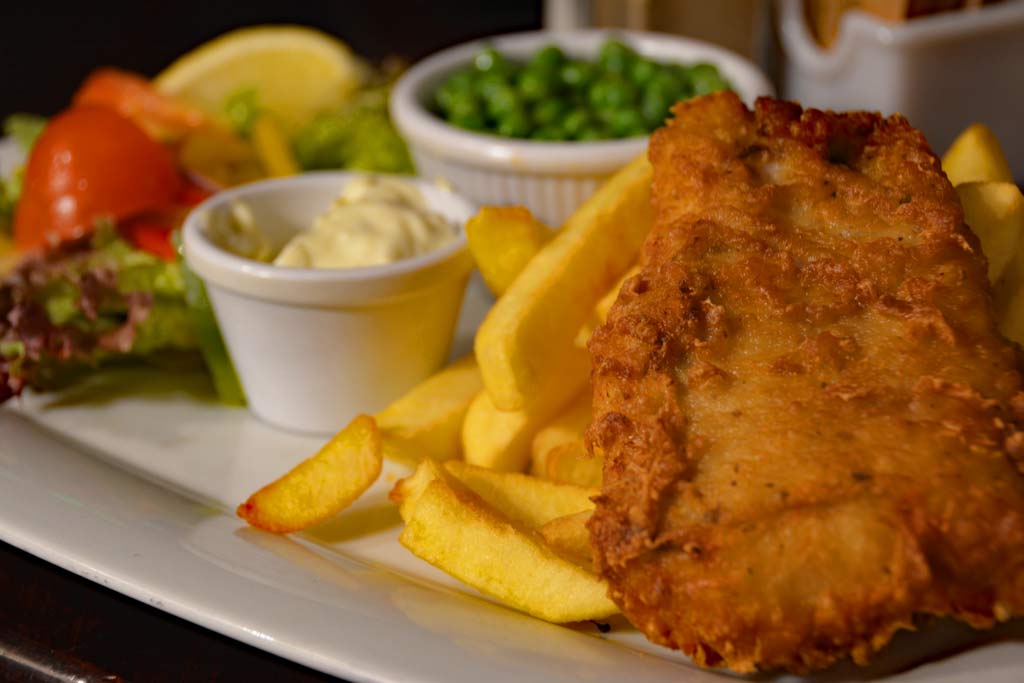 Dining out in Ireland can get expensive, so plan a few meals in to save money
Dining out in Ireland can get expensive, so plan a few meals in to save money
Is Ireland expensive to visit?
What is considered expensive to some is perfectly manageable to others. You can certainly do Ireland on the cheap by staying in hostels, limiting meals out, and minimizing the number of paid activities you choose to do. What keeps calling us back to Ireland is its natural beauty, and besides the cost of getting there, it’s FREE to enjoy! And on the flip side, you can experience a very luxurious visit to the Emerald Isle by staying in 5-star hotels, dining at the finest restaurants, and sparing no expense when it comes to activities.
You have to decide what is manageable for you and those you are traveling with and plan your trip accordingly. In this post, we’ll cover a variety of accommodation options, activities, and various modes of transportation, so you can select what matches your budget. We’ll also throw in some money saving tips near the end of this post to help you keep costs down as you’re planning a trip to Ireland.
Do I need to know Gaelic to communicate with locals in Ireland?
Though the Irish language (Gaelic) is the first official language, English is recognized as the second official language and is much more widely used throughout the country. You will notice many of the street signs are in Gaelic and/or English, but because much of the country relies heavily on tourism, pretty much all of the restaurant workers, lodging staff, and shop owners speak English. So, while you really shouldn’t have any difficulty communicating with the friendly locals, why not learn a few common phrases in Gaelic?
Staying Connected in Ireland
Unless you have international roaming included in your cell phone plan, you might want to consider getting a SIM card for your time in Ireland to keep you connected on the go! You’ll need an unlocked phone and a SIM card you purchase once you’ve arrived in Ireland.
We’ve always purchased ours at Tesco; you can also purchase them in the airport. You will be assigned an Ireland phone number, which you can utilize or not. The other option, which you can use in addition to a SIM card, would be to simply connect to the local WiFi when at your accommodation (double check that WiFi is included) or at a cafe or visitor center.
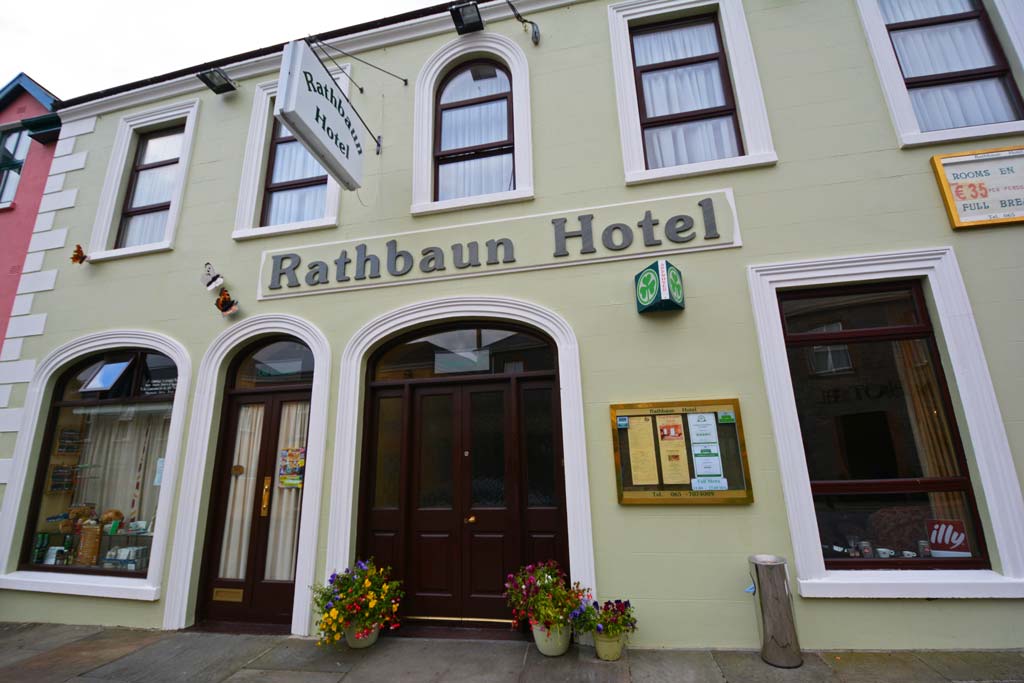 Most (but not all) accommodations in Ireland provide FREE WiFi
Most (but not all) accommodations in Ireland provide FREE WiFi
Do I need traveler’s insurance for my trip to Ireland?
Yes, because you never know when something could go awry during your travels. Some credit cards include traveler’s insurance when the value of your trip is paid in full with your credit card. Otherwise, consider World Nomads to give you peace of mind as you travel to, from, and around the Emerald Isle. We’ve only ever used World Nomads (and thankfully have never had to make a claim), but have also heard good things about Allianz. Both offer a free quote, so do a comparison to see which company best suits your needs and budget.
How is St Patrick’s Day in Ireland?
We’ve been fortunate enough to be in Ireland on St Patrick’s Day twice now. Truth be told, we were slightly disappointed in our Dublin experience. The following year, we went back to the Emerald Isle for a more small town St Patrick’s Day experience. You can read more about our two St Patrick’s Day in Ireland experiences HERE. And if you want more information about Dublin’s multi-day St Paddy’s Day festival, check out their official website.
Transportation to Ireland
Flights to Ireland
Dublin Airport (DUB): Ireland’s busiest airport providing innumerable flight options from nearby European countries in addition to intercontinental routes primarily from the Middle East & North America. 50+ airlines provide service to/from Dublin Airport with Aer Lingus & Ryanair as the primary service providers. Norwegian Air provides service from Newerk, NJ to Dublin.
Pick up a rental car at DUB or hop on one of 1,000 buses/coaches departing from the airport daily that will take you in and around Dublin and throughout the entire country. (TIP: You do not need a rental car if you are staying in Dublin for the duration of your visit the Ireland. The city is very walkable.) Taxis are also readily available. Click HERE for more information about getting to and from Dublin Airport using public ground transportation.
Shannon Airport (SNN): Located in Shannon, County Clare, SNN is an ideal airport to fly into if you are planning to primarily visit the west coast of Ireland (Ring of Kerry, Gap of Dunloe, Dingle Peninsula, Killarney, Cliffs of Moher, etc.).
Flight availability is somewhat limited when compared to Dublin, with less than 20 airlines flying into SNN and flights from the US primarily hailing from the east coast (New York, Newark, Boston, and Philadelphia). Rentals cars are available, as are taxis and bus service (Bus Éireann). Click HERE for more information about getting to and from Shannon Airport using public ground transportation.
Cork Airport (ORK): Even with only 8 gates and roughly 10 airlines servicing Cork Airport, it is Ireland’s 2nd busiest airport (when not considering Belfast’s two airports in Northern Ireland). It’s another great option if you are planning to only visit the southwest region of the country.
Click HERE for more information about getting to and from Cork Airport using public ground transportation.
Belfast Airport (BFS): Northern Ireland: If you plan to explore Northern Ireland on your visit to the Emerald Isle, you may want to consider flying into Belfast International, the island’s second largest airport, behind Dublin.
EasyJet and Ryanair are the primary budget European airlines servicing BFS. Click HERE for more information about getting to and from Belfast Airport using public ground transportation.
 The beauty of Ireland knows no bounds
The beauty of Ireland knows no bounds
**Check out our guide to where to look for cheap airfare**
TIP: To save on airfare (and/or to squeeze in a second mini-vacation), consider a long layover in another city that easily connects with an airport in Ireland. For example, we flew WOW Airlines (no longer in service) from Los Angeles to Reykjavik, Iceland for $129 and then from Reykjavik to Dublin for another $129 (not including luggage). So essentially, it cost us $260 to fly from Los Angeles to Dublin (plus luggage, one-way). With the money we saved by not booking direct from Los Angeles to Dublin (several hundred dollars), we explored the beauty of Iceland for a few days.
We also once booked a direct ticket from London to Dublin for less than $20 on Ryanair, so if it’s significantly cheaper for you to get to London (and explore for a few days), then continue on to Dublin, this may be an option for you. (Check out European budget airlines such as Ryanair, EasyJet, and Norwegian Air for connecting cities.) Of course, your schedule has to allow for flexible travel, but with some strategic planning, you just might be able to squeeze in a second mini-vacation to a destination you’ve always wanted to visit!
Keep in mind, you are paying for luggage twice and you’ll be responsible for transportation and lodging costs during your layover. We don’t recommend using this method to book a flight in and out of a layover destination on the same day (in the event of delays or flight cancellations).
Getting to Ireland by Ferry
Traveling to Ireland by ferry may not be the quickest method of transportation, but if coming from the United Kingdom (Scotland, England, or Wales) or France (Roscoff or Cherbourg), it’s at least another option! Ireland has 6 ferry ports (3 in Northern Ireland – Belfast, Larne, and Ballycastle; and 3 along the east and south coasts in the Republic of Ireland- Dublin, Rosslare, and Cork).
This helpful tool on the Discover Ireland website will help you identify the ferry providers for the particular route you desire. Taking the ferry from the UK or France would be beneficial if you are traveling with your own car, you hate flying, or you simply fancy a ride on the open ocean.
Ireland Cruises
Many of the major cruise line companies (Princess, Royal Caribbean, Norwegian, Celebrity, Holland America, etc.) offer itineraries with ports of call in Ireland. These are usually part of a longer cruise visiting various ports of call throughout the British Isles, Iceland, and/or Norway (depending on the cruise line, length of cruise, and specific itinerary).
The primary ports of call in Ireland include Dublin and Cork (Cobh) and Belfast in Northern Ireland. Sailings in this region of the world typically take place from the end of March to the end of September. Cities in Ireland are also often included as ports of call on many transatlantic cruises going to/from the US and Europe during the summer months. To find great deals on cruises including ports of call in Ireland, check out Vacations to Go or Cruise Sheet.
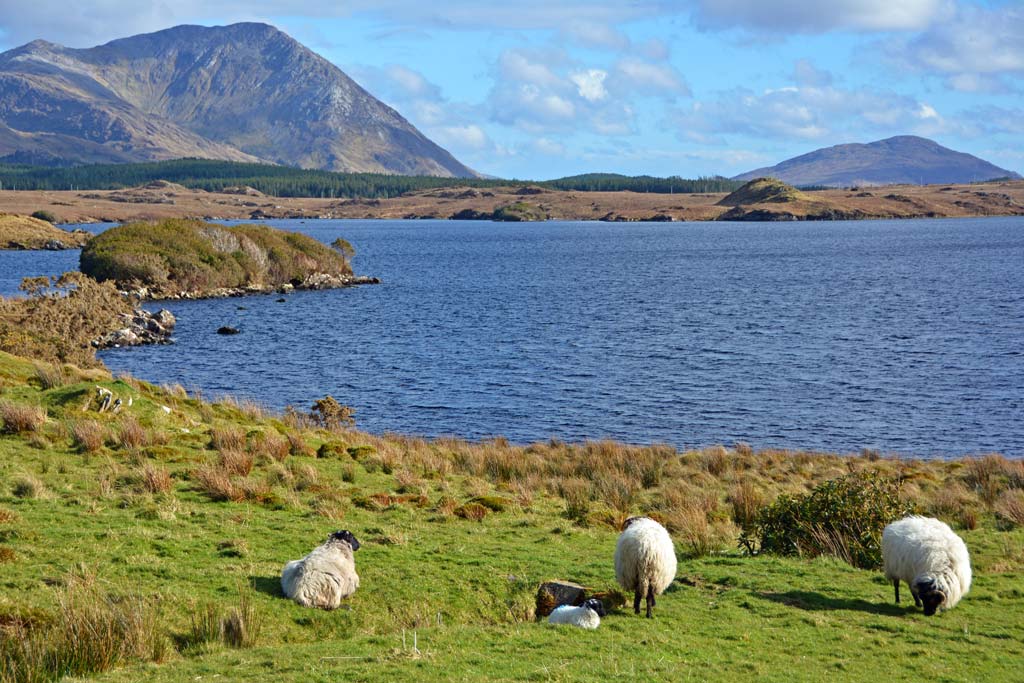 No matter how you explore Ireland, you’ll marvel at its beauty
No matter how you explore Ireland, you’ll marvel at its beauty
Public Transportation in Ireland
Taxi Service in Ireland
Taxis are readily available at each of Ireland’s airports and can be hailed or requested by phone/app in most major cities. This may not be your cheapest option for longer distance hauls, but it’s another option nonetheless. All taxis in Ireland have a large yellow & blue roof-sign and door signage. They are all metered and they charge the same rate throughout the country.
For an estimated fare cost, use the Taxi Fare Estimator. Extra charges could include: additional passengers, a telephone booking fee, and toll charges. There is no additional charge for luggage or airport pick up. If you have questions about the meter charges, just ask! Most drivers are honest and friendly. Hailo and Uber (online ride request apps) are both available, as well.
Bus Service in Ireland
As far as bus service is concerned, Bus Éireann offers a network of local, city, commuter, and long-distance bus services connecting airports, cities, and communities. Though they mostly offer Point A -> Point B services, Bus Éireann also offers a few day tour options. If you’re just looking for transportation from Dublin airport to the city centre, take a ride on the AirLink Bus. It’s the fastest, most frequent and best value service (only €7) between Dublin Airport and the city centre.
With buses leaving the airport every 10-20 minutes (4:45 am-12:30 am) 7 days a week, there’s no shortage of availability. You can buy tickets online or directly from the driver. Stops include Busaras (Dublin’s main bus station), O’Connell Street (city center), Heuston (one of Dublin’s main train stations), and more!
There are several other airport to city centre bus options, which you can explore on each airport’s website. Here’s information on getting to and from Dublin airport by bus.
Train Service in Ireland
Irish Rail offers intercity railway services, as well as Dart and commuter trains throughout Ireland. Check their website for train times and fares. To save a few Euros, you can book online in advance and collect your ticket at the self-service ticket machine at the main stations. Otherwise, simply purchase your ticket when you arrive at the station. Seat reservations are pretty much never compulsory.
Irish Rail connects Dublin to most corners of the country (including Northern Ireland) and also offers service from Waterford to Limerick and Cork or Kerry. For a look at the most popular train routes in Ireland visit Irish Rail’s website. Once you arrive at your station of choice, it is then up to you to figure out how you will get to the various cities and sites (rental car, bus, taxi, guided tour, etc.).
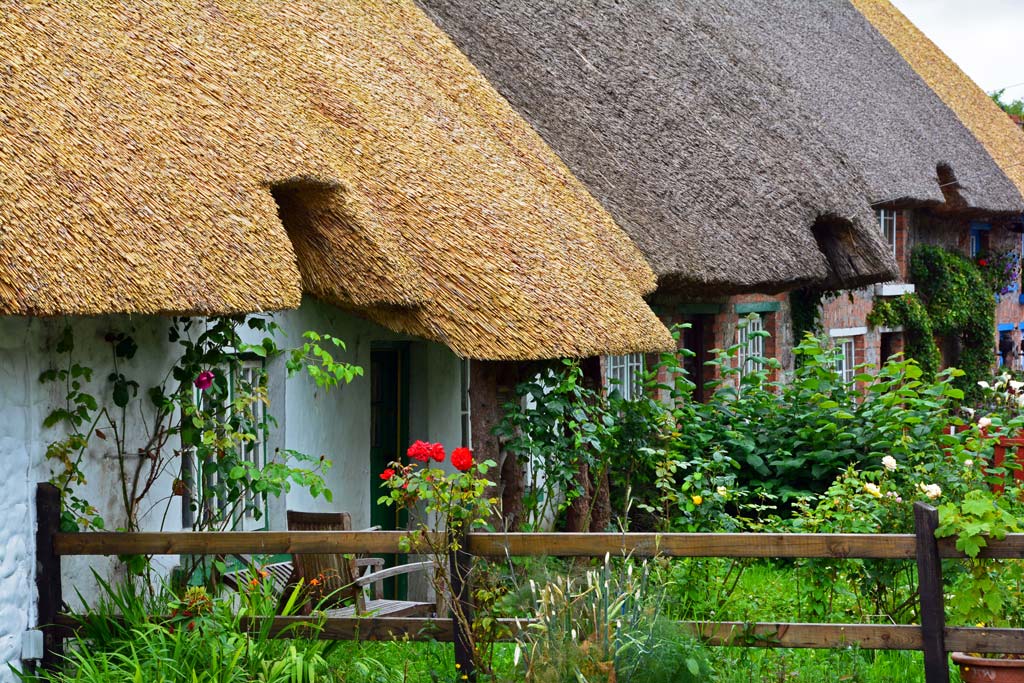 The charming town of Adare near Ireland’s west coast
The charming town of Adare near Ireland’s west coast
Accommodations in Ireland
There are a variety of lodging options throughout the Emerald Isle, ranging from luxurious castles to a handful of adequate budget hostels. Start your search early to find the accommodation that best suits your needs and budget! Book a luxurious hotel, bed and breakfast, private room, entire apartment, quaint cottage, or vacation rental. Here are a few sites we’ve used while researching places to stay in Ireland. We’ve actually used each of the following companies throughout our various visits to the Emerald Isle:
- Sykes Cottages – Looking for the ultimate Ireland lodging experience? Rent a cozy cottage! You can read more about our pleasant experiences with Sykes Cottages HERE.
- AirBnB – Rent a shared room or private room in the home of a local. You also have the option to rent out an entire home/apartment for yourself and travel companions. If you’ve never stayed at an AirBnB before, use our unique link to save money your first stay!
- VRBO – Similar to AirBnB in that you can rent out the home/apartment of a local. Loads of vacation rentals at reasonable prices.
- Booking.com – Search everything from bed and breakfasts and apartments to houseboats and luxurious castles.
- TripAdvisor – Read reviews of accommodations from previous travelers. Book vacation rentals directly through Trip Advisor.
How to Save Money When Planning a Trip to Ireland
- Plan to visit in the shoulder season (Fall and Spring) or off-season (November-February) to save on airfare, rental car, and accommodations.
- If you’re staying at a hotel or B&B that includes breakfast – fill up! Eat a big breakfast, have a light snacky (inexpensive) lunch, then all that’s left is dinner (dine in or treat yourself to a nice meal out)!
- Shop at a local grocery store & have picnic meals instead of dining out for every meal, or if you’re staying at an accommodation w/ a kitchen available to you, buy groceries & cook a few meals ‘at home’
- For super cheap accommodations, look into staying in one of Ireland’s many hostels
- Our favorite thing to do in Ireland is simply enjoy the natural beauty (via scenic drives and hikes), which costs nothing beyond initial travel costs and gas. There’s no admission fee to enjoy the great outdoors! (Some popular natural attractions, such as the Cliffs of Moher and Giant’s Causeway (in Northern Ireland) will have parking fees and optional visitor’s center fees.) Though, you can always park elsewhere and hike to these natural locations for free, if you want to save money and you’re up for a little walk!
- Plan ahead and create a budget for how much you want to spend on your vacation (i.e.- transportation, food, activities, etc.). When we don’t plan in advance, we tend to overspend!
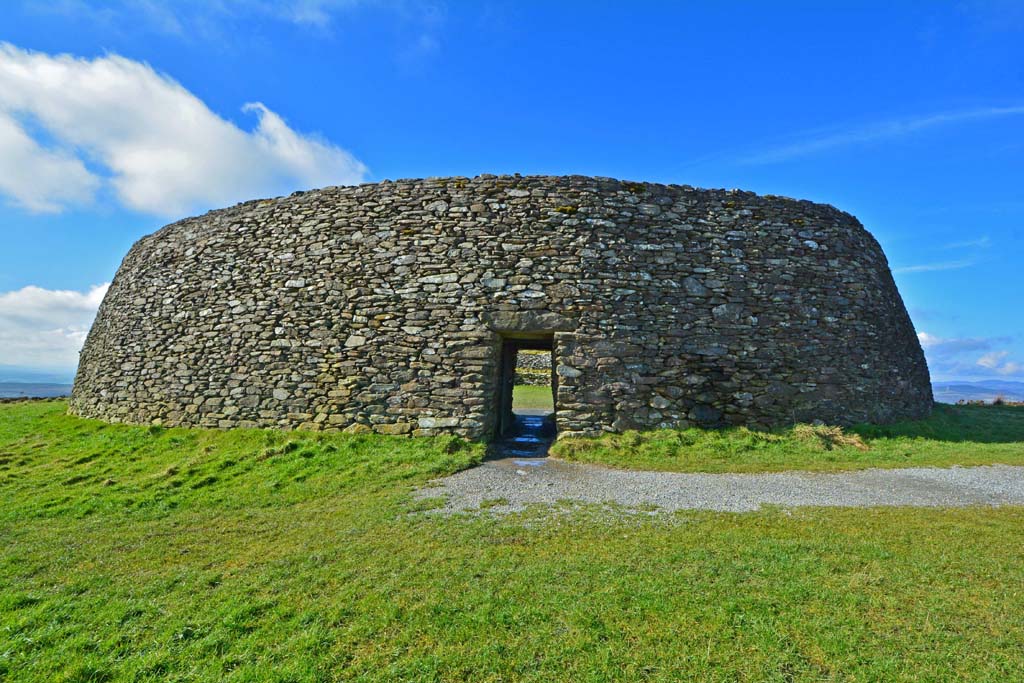 History buffs will LOVE all of Ireland’s heritage sites like Grianan of Aileach
History buffs will LOVE all of Ireland’s heritage sites like Grianan of Aileach
Places to Visit in Ireland
There is so much to see and do in Ireland and since this post is getting rather extensive, we’re going to guide you to some of our other posts, so you can continue planning a trip to Ireland! For starters, be sure to check out our massive list of 60 Places to Visit in Ireland!
Dingle Peninsula
One of our favorite places in Ireland is the Dingle Peninsula. While many people visit the peninsula as a day trip, just to explore Slea Head Drive, we feel that its a destination in and of itself. For example, Castlegregory and the North Shore of Dingle Peninsula is often overlooked by tourists, and deserves so much more attention than it receives. There are some great accommodations on Dingle Peninsula, so you wouldn’t need to travel far to experience some of the most beautiful places in Ireland.
Scenic Drives & Natural Beauty
While the Ring of Kerry gets a lot of publicity, there are two other peninsula drives just south of the ‘Ring’ that definitely deserve a mention. Both the Ring of Beara and the Mizen Head Peninsula are stunning coastal drives minus the crowds of Kerry. Though despite the inevitable crowds (mostly during the summer months), no visit to Ireland is complete without a visit to the famed Cliffs of Moher and the Gap of Dunloe. (We visited the Gap of Dunloe for a second time during our November visit and practically had the place to ourselves.)
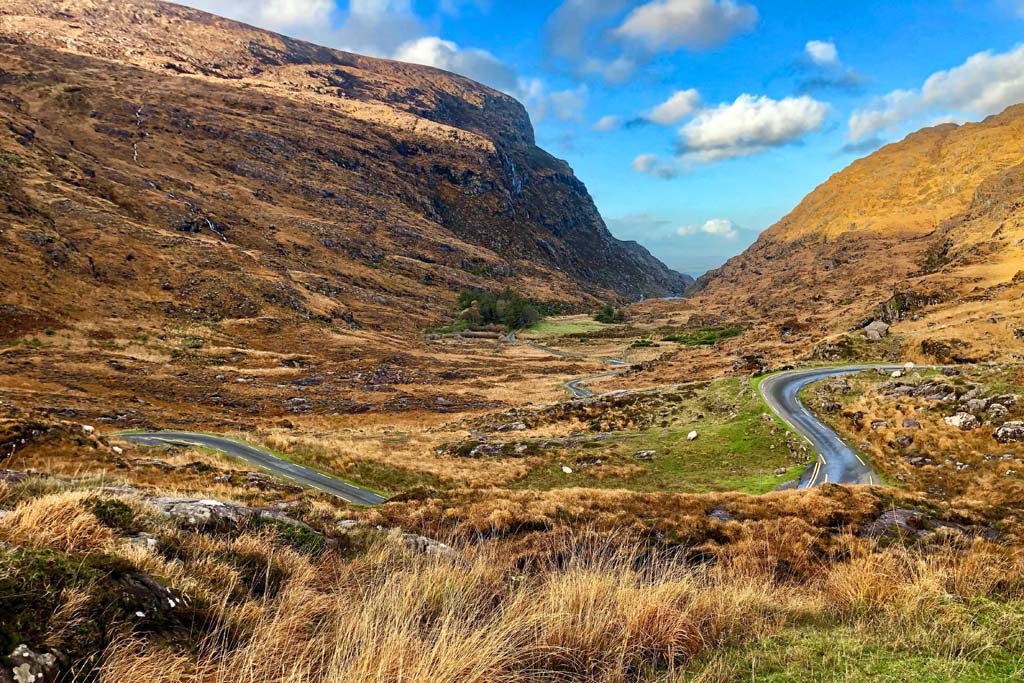 The Gap of Dunloe in County Kerry is a great addition to any Ireland itinerary
The Gap of Dunloe in County Kerry is a great addition to any Ireland itinerary
Small Towns in Ireland
If you’re looking for small town charm in Ireland, you don’t have to look very far! Adare and Ennis are just two examples of the countless charming villages found throughout the country. Oughterard is the gateway to Connemara, which is yet another region of the country that deserves more recognition. Hoping to enjoy some live traditional Irish music during your time in Ireland? There is definitely no shortage of places to sit in on a ‘trad sess’. The town of Dingle (on the Dingle Peninsula) is famous for its live music offerings.
This is just a small sample of things to do in Ireland! We’ve explored so many wonderful places around the country, including places we have yet to write about. So, stay tuned for even more great Ireland content. In the mean time, if you’ve got questions that we can hopefully answer, please don’t hesitate to ask!
Need More Help Planning a Visit to Ireland?
Again, please check out our massive 20 page Ireland Destination Guide, for more planning tips. The guide summarizes this post and includes so much more. Topics include: Getting to Ireland | Getting Around Ireland (Rental Cars & Public Transportation-Train, Taxi, Bus, Motor Coach Tours) | Top 10 Scenic Drives in Ireland | Awe-Inspiring Abbeys | 4 Traditional Irish Pubs to Check Out | 5 Charming Small Towns Not to Miss | Ireland’s 6 National Parks | Interesting Facts About Ireland | Irish Dishes to Try | Islands of Ireland | Exploring Ireland’s Fascinating History | Top 5 Highlights in Ireland’s Most Visited Counties* | Frequently Asked Questions About Travel to Ireland | Money Saving Tips | 4 Detailed Sample Itineraries | Additional Resources | Photo Guide to County Highlights *Counties Included: Clare, Cork, Donegal, Dublin, Galway, Kerry, Mayo, Sligo, Waterford, Wexford, & Wicklow
We truly hope you fall in love with Ireland as much as we have!